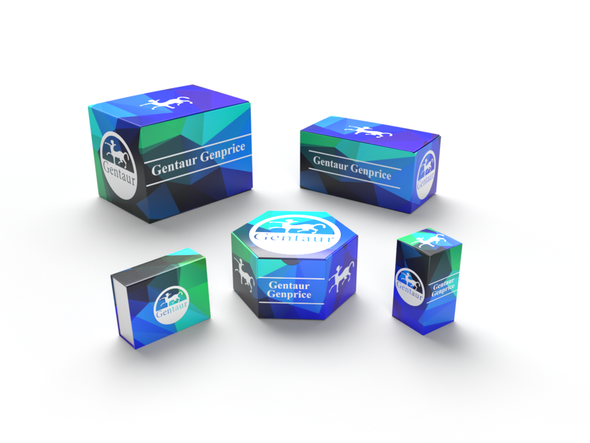749
Human Beta-3 adrenergic receptor (ADRB3) ELISA Kit | KTE60951
- SKU:
- 749-KTE60951
- Availability:
- Usually ships in 5 working days
Description
Human Beta-3 adrenergic receptor (ADRB3) ELISA Kit | KTE60951 | Gentaur UK, US & Europe Distribution
Application: This Human Beta-3 adrenergic receptor (ADRB3) ELISA Kit employs a two-site sandwich ELISA to quantitate ADRB3 in samples. An antibody specific for ADRB3 has been pre-coated onto a microplate. Standards and samples are pipetted into the wells and anyADRB3 present is bound by the immobilized antibody. After removing any unbound substances, a biotin-conjugated antibody specific for ADRB3 is added to the wells. After washing, Streptavidin conjugated Horseradish Peroxidase (HRP) is added to the wells. Following a wash to remove any unbound avidin-enzyme reagent, a substrate solution is added to the wells and color develops in proportion to the amount of ADRB3 bound in the initial step. The color development is stopped and the intensity of the color is measured.
Detection Method: Colorimetric
Conjugate: N/A
Sample Type: Cell culture supernatants#Serum#Plasma#Other biological fluids
Assay Type: Multiple steps standard sandwich ELISA assay with a working time of 3-5 hours. It depends on the experience of the operation person.
Kit Component: • Human Beta-3 adrenergic receptor microplate
• Human Beta-3 adrenergic receptor standard
• Human Beta-3 adrenergic receptor detect antibody
• Streptavidin-HRP
• Standard diluent
• Assay buffer
• HRP substrate
• Stop solution
• Wash buffer
• Plate covers
Features & Benefits: Human Beta-3 adrenergic receptor (ADRB3) ELISA Kit has high sensitivity and excellent specificity for detection of Human ADRB3. No significant cross-reactivity or interference between Human ADRB3 and analogues was observed.
Calibration Range: Please inquire
Limit Of Detection: Please inquire
Usage Note: • Do not mix components from different kit lots or use reagents beyond the kit expiration date.
• Allow all reagents to warm to room temperature for at least 30 minutes before opening.
• Pre-rinse the pipet tip with reagent, use fresh pipet tips for each sample, standard and reagent to avoid contamination.
• Unused wells must be kept desiccated at 4 °C in the sealed bag provided.
• Mix Thoroughly is very important for the result. It is recommended using low frequency oscillator or slight hand shaking every 10 minutes.
• It is recommended that all samples and standards be assayed in duplicate or triplicate.
Storage Instruction: The unopened kit should be stored at 2 - 8°C. After opening, please store refer to protocols.
Shipping: Gel pack with blue ice.
Precaution The product listed herein is for research use only and is not intended for use in human or clinical diagnosis. Suggested applications of our products are not recommendations to use our products in violation of any patent or as a license. We cannot be responsible for patent infringements or other violations that may occur with the use of this product.
Background: ADRb3 is located mainly in adipose tissue and is involved in the regulation of lipolysis and thermogenesis. Some β3 agonists have demonstrated antistress effects in animal studies, suggesting it also has a role in the CNS. Beta3-Receptors are found in the gallbladder and in brain adipose tissue. Their role in gallbladder physiology is unknown, but they are thought to play a role in lipolysis and thermogenesis in brown fat. Beta adrenergic receptors are involved in the epinephrine- and norepinephrine-induced activation of adenylate cyclase through ngono the action of the G proteins of the type Gs.SR 59230A was thought to be a selective β3 antagonist but later found to also be an antagonist of the α1 receptor.
Alternative Names: ADRB3; BETA3AR; FLJ99960;
Search name: ADRB3; BETA3AR; FLJ99960;
Tag: ADRB3










